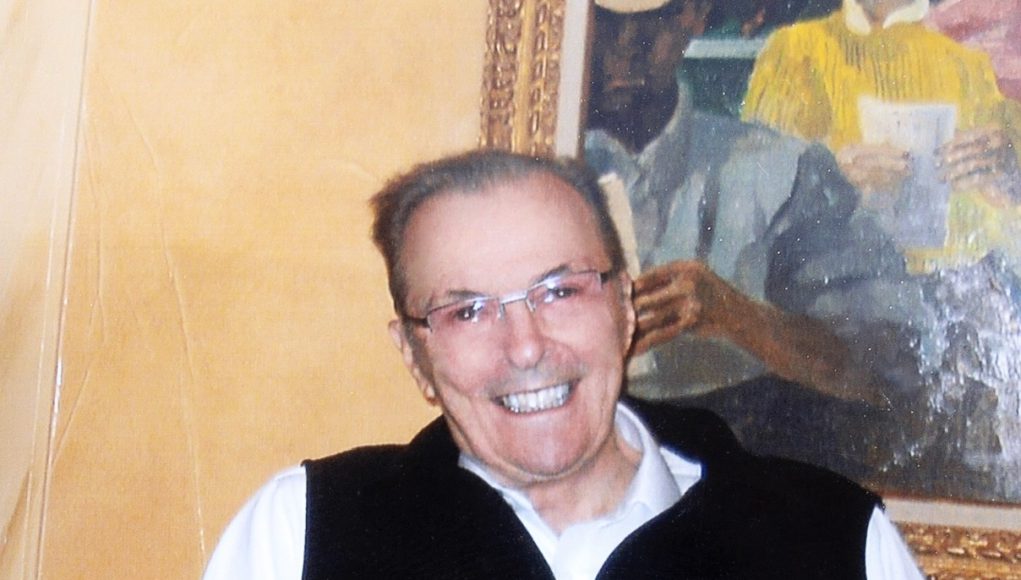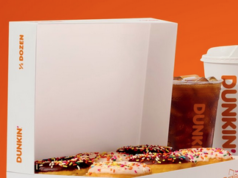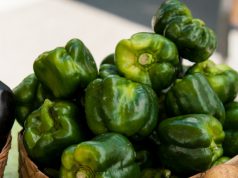It’s a Horse, of Course
Preston Madden explains the streets of Hamburg
BY JOSHUA CAUDILL
Whether you attended every leg of the recent Triple Crown of horse racing, or simply sipped a mint julep on the first Saturday in May and watched a little Derby coverage on TV — you know that all eyes have been on the horse industry and Justify this summer. Ever since he broke the “Curse of Apollo” and remained undefeated, he has captured the hearts of Kentuckians everywhere.
Justify is not only the 13th Triple Crown winner, he is the first undefeated winner since Seattle Slew. It’s an excitement that racing fans didn’t expect to experience so quickly after American Pharoah finally became “the one” in 2015 to break the 37-year Triple Crown drought.

Lexington now occupies a unique place in history with the only two living Triple Crown champs — American Pharoah and Justify — making their homes here. We’ve visited both of them in recent weeks, and they are — in a word — magic.
It remains to be seen whether Justify will follow in American Pharoah’s footsteps and bring home the Grand Slam (Derby, Preakness, Belmont, and Breeders’ Cup). If he does, he couldn’t have chosen a more perfect year, as the Breeders’ Cup will return to Churchill Downs in November.
Can a Justify Boulevard be far behind with a horse like this to inspire those empowered to ink the names across our green street signs?
When you live in the horse capital of the world, it’s understood that your city occupies a unique position in the equine landscape. It isn’t just thoroughbreds of course. The annual Junior League Horse Show (the first leg of the American Saddlebred Triple Crown) will relocate to its new home at the Kentucky Horse Park later this month, and is expected to draw as many as 30,000 visitors. The Rolex 3 Day Event and High Hope Steeplechase enjoy worldwide reputations at the Kentucky Horse Park; polo matches are a popular part of Lexington’s culture (and have even been played in the center of downtown); the two very different Keeneland and Red Mile tracks both call Lexington home. And the world came calling on the bluegrass when the 2010 World Equestrian Games were hosted here, with attendance estimated at half a million.
 And if you’ve so much as turned right on red in Lexington, odds are, you’ve had an encounter with this history, however peripheral.
And if you’ve so much as turned right on red in Lexington, odds are, you’ve had an encounter with this history, however peripheral.
It’s a sign — a literal, green sign — of how much we love our horses here.
You don’t have to be a racing enthusiast to notice how many of our streets are named after famous racehorses (unless maybe you thought Man o’ War was all about the jellyfish).
No one is more qualified to explain the origins of Hamburg’s street names than Preston Madden, the legendary 80-something retired horseman who once sat on Man o’ War as a child. Characterizing him as “the greatest horse that ever lived,” he still recalls the time that Man o’ War’s groom “Will Harbut picked me up and put me on.”
“Money is only the symbol of success — not to be confused with success itself.”
Madden is heir to one of the most prominent families of horse racing. His grandfather John E. Madden bought the yearling, Hamburg, for $1,200 in 1896. He parlayed Hamburg’s winnings and sale into the purchase of the farm and breeding operation that would become Hamburg Place along Winchester Road.

Today, Sir Barton Way is the primary Hamburg artery between Winchester Road and Man O’War. (When Hamburg Journal opened 15 years ago, Sir Barton was sparsely populated and served as everyone’s favorite fast shortcut to connect to downtown via Winchester Road. Times have changed.)
The first Triple Crown winner, Sir Barton, was bred at Hamburg Place. So were four more Derby winners, and four Belmont Stakes winners.
Breeding five Kentucky Derby winners, five Belmont Stakes winners and the first Triple Crown winner, John E. Madden’s legacy was set, but not complete. It was his grandson, Preston Madden, who went on to win big at the races and even bigger in real estate. But, he explains, “Money is only the symbol of success — not to be confused with success itself.”
He says, “Before this end of the farm was developed, I was extremely busy breeding horses. I had 100 horses on the farm, so my son [Patrick] did the actual [Hamburg] development and my wife, Anita, named the streets. I think she did a hell of a job. My grandfather bred over 100 stakes winners. She had a list of 100-plus stakes winners —Sir Barton, first Triple Crown winner, and Alysheba were the obvious choices so she took from all of his stakes winners and my stakes winners.”
The Maddens transformed Hamburg Place into the thriving commercial corridor that it is today, but Preston always knew he still wanted to carry on the family tradition. Even in grade school, he told his classmates that he wanted to breed a Kentucky Derby winner.

Wanting desperately to bring back the garland of roses, a feat that Hamburg Place had not experienced since Flying Ebony won the Derby in 1925, Preston took his chances with Vegas Vic in 1971 and Kentuckian in 1972. Vegas Vic finished sixth, Kentuckian finished 10th. And then came Alysheba.
“Alysheba made my life,” Preston says.
Preston had bred Alysheba and sold him as a yearling to Dorothy and Pam Scharbauer for $500,000. And in 1987, Preston would get his third chance at a Derby winner when Alysheba walked into the starting gate at Churchill Downs.
At the top of the stretch, Alysheba’s legs buckled after colliding with Bet Twice and it looked like Preston’s quest would end up in disappointment yet again. But Alysheba and jockey Chris McCarron recovered and made a last ditch run for the finish, edging out Bet Twice for the win. Preston and Anita, watching the race from a balcony overlooking the track, were riveted.
“My wife was on my right. It became clear before the finish line that Alysheba was going to win,” Preston said. “This is the third time we’ve run in the Derby and I had been trying to win this race all my life, so when people ask me what were my thoughts when he crossed the finish line, I tell them the true story. One hundred yards out, my wife took her left arm and put it around my neck and pulled my head down” and planted such a kiss on him that he could barely even see the finish line. The memory makes him smile to this day (even if it briefly obscured his view).
After exiting the Winners’ Circle, the Maddens were in the Director’s Room when a girl who attended grade school with Preston walked in and proclaimed, “I want everyone in here to know that when we were in the third grade, Preston Madden told me he was going to be a Kentucky Derby winner.”
“You think my wife was happy because [this classmate] remembered me? Hell no, she didn’t like it at all,” he says, laughing at the memory.
Sitting in his Hamburg office today on Sir Barton, Madden is happy to tell the story behind every image on the walls — Sir Barton, Old Rosebud, Man o’ War, Hamburg, and Pink Pigeon are just a few of the familiar names pictured in paintings and photographs.

Between the gallery of fine art, the burnished wood, and the open bar, it feels classic and reminiscent of an episode of Mad Men, if Don Draper were a horse racing legend.
One painting is impossible to miss, centered over the receptionist’s desk and illuminated by lamps that serve as spotlights—a painting of Alysheba winning the Kentucky Derby under the Twin Spires.
That moment was everything to him. Whether it was the kiss from Anita or the emotion of taking the roses for Hamburg Place that made that moment most special, he doesn’t know. And although he hasn’t been to the Derby in nearly 30 years and he just follows the sport from afar, he still has the legacy and memory he built both in Hamburg and in horse racing. It’s been two decades since an epic Anita Madden Derby Party has been hosted in Hamburg, but no one has forgotten. It was Preston who suggested one year’s theme, “The Diamond As Big As The Ritz,” an homage to the fact that one of F. Scott Fitzgerald’s Princeton classmates was Madden’s father.
“I’ve been lucky as hell,” he reflects, “and I think it’s important to understand that luck is a big factor particularly in the horse business.”
“There were expectations for me to do things and I was lucky enough to be able to accomplish those, but the year that Alysheba was foaled, there were roughly 36,000 registered foals, but how many Kentucky Derby winners are there? I’ve been lucky and God’s been good to me and I’ve had some fun and I’m going to have some more fun.”
THE LEGENDS BEHIND HAMBURG’S STREETS
Pink Pigeon Parkway was named after a seven-time stakes-winning filly.
Sir Barton Way was named after the first Triple Crown winner in 1919.
Star Shoot Parkway was named after a sire of Sir Barton and 181 other stakes winners.
The main urban outer loop circling Lexington to its south, Man O’War Boulevard, is named after one of the greatest thoroughbred racehorses.
Sir Barton was bred by John Madden in 1916 and sired by Star Shoot. Sir Barton raced six times in his two-year old season and didn’t win a single one. But his three-year old season would prove to be different and become legendary.
He made his 1919 season debut in the 45th running of the Kentucky Derby. Expectations were for the colt to be a pacemaker for his highly regarded stablemate, Billy Kelly. Sir Barton didn’t get the memo and went wire-to-wire and won by five lengths.
Just four days later, Sir Barton won the Preakness by four lengths. Later that month, he won the Withers Stakes before ultimately going to the Belmont Stakes, where he won and became the sport’s first Triple Crown winner and doing so, all in a span of 32 days. Fittingly, the street that sports his name intersects with Man O’War Boulevard.
 The Hamburg Journal is located on Old Rosebud, which is named after another horse that Madden bred at his farm. Old Rosebud, the bay colt from the stallion Uncle’s first crop of foals, was the top earner in his two-year old season. In 1914, Old Rosebud won the Kentucky Derby by eight lengths.
The Hamburg Journal is located on Old Rosebud, which is named after another horse that Madden bred at his farm. Old Rosebud, the bay colt from the stallion Uncle’s first crop of foals, was the top earner in his two-year old season. In 1914, Old Rosebud won the Kentucky Derby by eight lengths.
War Admiral, the sport’s fourth Triple Crown winner, also has a Hamburg street named in his honor. Sired by Man o’ War and having won 21 of 26 starts including the Triple Crown in 1937, War Admiral always comes up in any discussion of the greatest race horses in history.
Despite all of his success, War Admiral may be best remembered for his race against Seabiscuit in what is famously referred to as “The Match Race of the Century,” which went on to become a movie (Seabiscuit), where War Admiral was portrayed as the antagonist (chomping the scenery and stopping just short of twirling an imaginary mustache of villainy).
This article also appears on page 12 of the July 2018 print edition of Hamburg Journal.
For more Lexington, KY, Hamburg area news, subscribe to the Hamburg Journal weekly digital newsletter.












